iPad mini Review
by Anand Lal Shimpi & Vivek Gowri on November 20, 2012 6:10 PM ESTDesign & Smart Cover
The smaller screen of the mini is joined by the super-slim industrial design from the fifth generation iPod touch that debuted a couple of months ago. I’m actually a pretty big fan of the direction Apple’s mobile design teams have taken recently, the overall visual style is much cleaner and focused now, with less pronounced radiusing and more rectangular profiles across the board. The edges are rounded enough for a very smooth in-hand feel, but the front edge has the same highly polished, chamfered ring around the bezel as the iPhone 5.
The dark monochromatic look is very sleek; combined with a brightly colored Smart Cover like the red one, the effect is pretty striking. The white/silver colour scheme, as on the iPhone 5, is elegant, but nowhere near as visually striking as the uniformly dark mini.
The face should be very familiar to iDevice users - a front facing camera centered at the top, an ambient light sensor to the left of it, and a home button at the bottom. The home button has been shrunk, though it’s set far enough away from the screen that I feel like they could have easily kept the same home button that is used in the other iDevices. I’m assuming there’s a reason for the downsizing, probably relating to the placement of the hardware around the display, because this isn’t the type of thing typically overlooked by Jony Ive and Co.
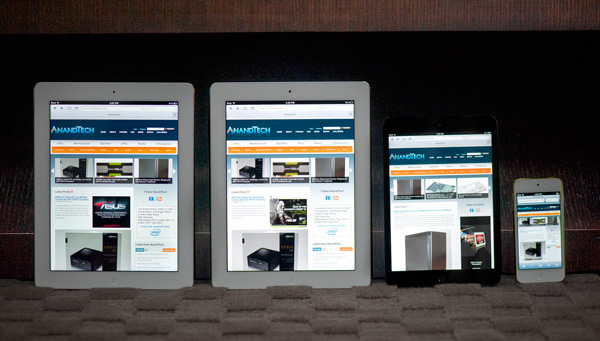
From left to right: iPad 4, iPad 2, iPad mini, iPod Touch (5th gen)
The bezel has been reduced considerably in size in all four directions, but more so on the sides than to the top and bottom. The result is a device with a slightly different physical aspect ratio than the 9.7” iPad - 4.45:3 instead of 3.90:3 (where, in both cases, the display has an aspect ratio of 4:3). The narrower bezel looks good - cleaner and more modern, and I think the iPad mini is better proportioned aesthetically. Of course, the smaller footprint is also one of the main factors in the awesome in-hand feel, so it’s a functional decision as much as an aesthetic one. Surprisingly enough, the lack of bezel on the sides of the mini doesn't impact normal use. Apple tweaked iOS a bit to improve touch rejection along the edges of the mini.
Button and port placement is identical to the preceding iPads, with a few minor but important changes. The silence/rotation lock slider in particular feels much more robust than in previous editions. The top edge has the power button on the right and headphone jack on the left, with volume buttons on the right edge, next to the camera. The buttons themselves are now metal, and offer better feel and feedback than the plastic buttons of the 9.7” iPad.
Coming around the edge to the bottom, we see that the 30-pin dock connector has been replaced by the new Lightning port, centered as always. The mono speaker in the right corner of the back is now gone, superceded by a pair of speakers set on either side of the Lightning port. That’s right - the iPad finally has stereo speakers, and they’re actually pretty decent. Clean sound output, and loud enough to fill a 400 sq ft room without distorting at high volumes. As with most mobile devices, the sound is a bit thin, but a decent improvement over my admittedly low expectations.
Given that the iPad mini shares the same colors and materials as the iPhone 5, I was curious to see whether the paint would be as fragile and whether we’d see a repeat of the quality control issues Apple had with it at launch. Thankfully, the anodization seems far more robust and significantly more resistant to scratching, even on the polished aluminum band at the front. I didn’t see any material or paint defects when I unboxed it, even after a thorough going over, and through two weeks of not particularly gentle use, I haven’t seen any scratching. It’s a very different experience than my iPhone 5, which came out of the box with the front panel not properly clipped into the aluminum frame and scratched whenever I looked at it wrong. This isn’t a device that needs any other kind of case unless you plan on abusing it, and I feel like a larger case would undo some of the benefit of the ultralight chassis.
Apple does built a custom Smart Cover for the mini, available in a number of colors. Unlike the bigger Smart Cover, the mini's cover integrates the magnetic hinge into the same material as the rest of the cover, resulting in a very cohesive design:
The big benefit of the Smart Cover is the ability to use it as a stand:
The angle of the folded Smart Cover is considerably larger than on the standard iPad, making the iPad mini lean back more vs. standing upright on the bigger model:
I would recommend getting a Smart Cover for the versatility of the stand and to have some form of protection for the screen. Plus, the black iPad mini + red Smart Cover combination just looks awesome.


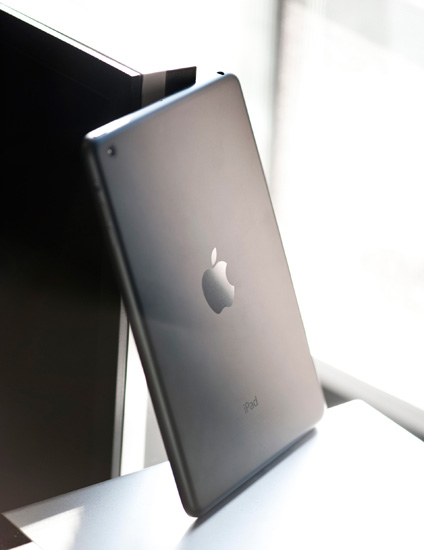
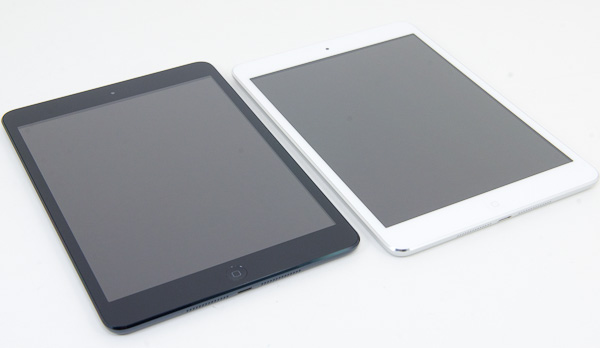
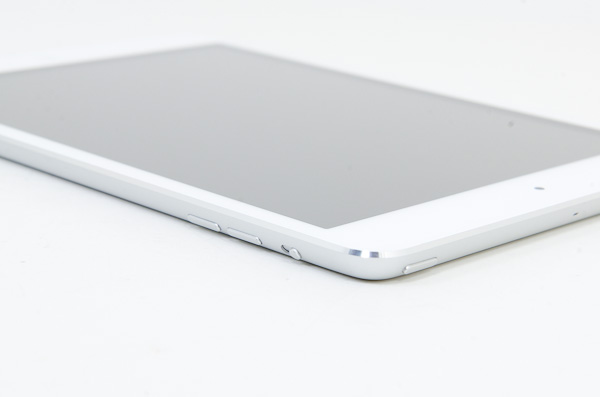
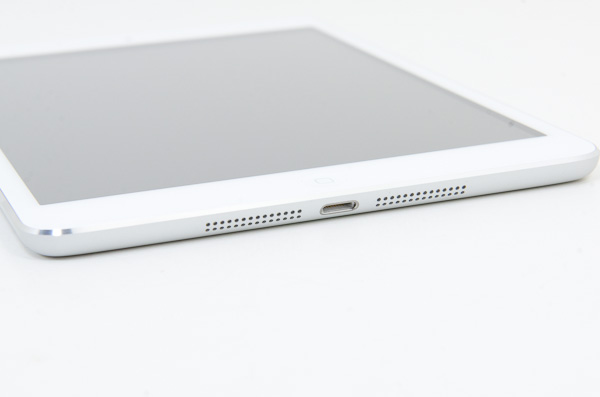
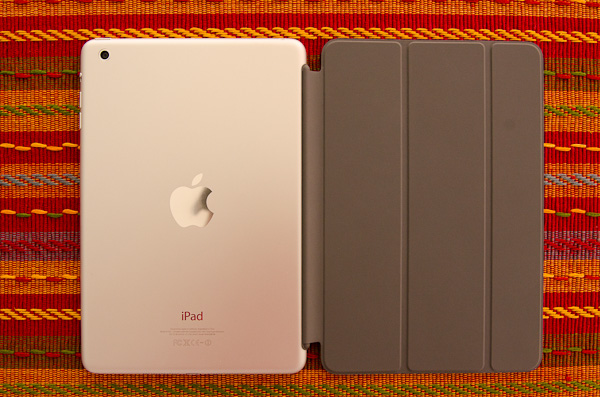
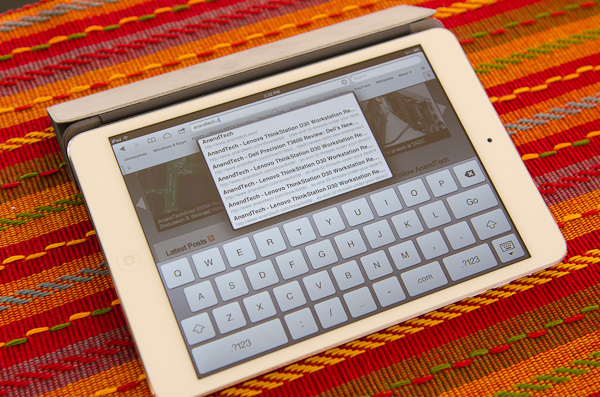
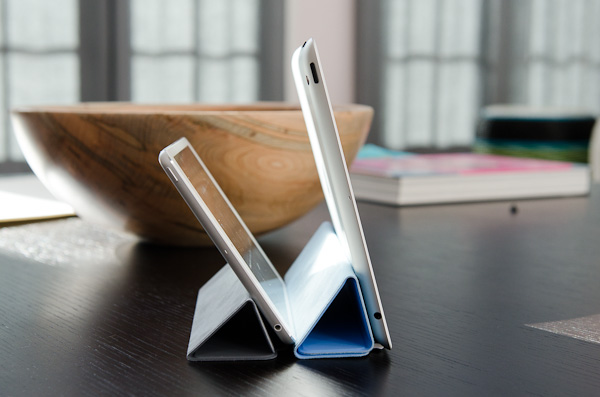








140 Comments
View All Comments
Zink - Wednesday, November 21, 2012 - link
http://www.youtube.com/watch?v=5MMmLQlrBwstwtech - Tuesday, November 20, 2012 - link
I hope Google keeps the same screen size for the next 7" Nexus, but trims into the border a bit on the sides. Right now it's right at the limit for wrapping a hand around it, and I have pretty big hands.Crocography - Tuesday, November 20, 2012 - link
And also its all metal back is too slippery compared to the Nexus 7. I waited for both to be release before I bought the Nexus 7 32Gb. (bought one by selling my iPad 2013 model -- never really used it much)jjj - Tuesday, November 20, 2012 - link
If Apple is Apple they should have made this higher end and price it at 400$, and that still is what Job's Apple would do.Next year with the ipad 2 gone,they would need to drop the ipad 4 to 400$ or retire it so covering the 400$ range with the mini would make more sense.The cost of the SoC is a relative thing,32nm yields will get better by then,keeping it thin could be problematic if they double the res.PS; i am in no way suggesting this would be a price worth paying, just sayiing what would Apple do.
dishayu - Wednesday, November 21, 2012 - link
Is it possible Apple made the iPad mini worse than they were capable of, right now, just so that they can effortlessly update it and make more money out of it?ltcommanderdata - Wednesday, November 21, 2012 - link
Like any product designer, Apple has got to optimize for a variety of factors including component availability, component cost, final sale price, what features customers want, what features customers can tolerate not having, etc. If they just cared about maximizing profits they might as well have just thrown in the A4 from the iPhone 4 and a larger version of the TN panel used in the iPhone 3GS since they share the same dpi anyways.The iPad Mini already has worse battery life than the iPad 2 even without a retina display. Adding a retina display and a faster SoC to drive it will make this even worse unless a larger battery is included. One of the main features of the iPad Mini is how thin and light it is, even thinner and lighter than competing 7" tablets despite having a larger screen. Gaining a retina display in exchange for a thicker, heavier tablet may silence some complaints but will only create new ones. What's worse, a thicker, heavier design might make the iPad Mini difficult to hold given it's thin bezel design with limited grip area, so is a non-starter given current technology in 2012. Hopefully Anand is wrong in his prediction that a Retina iPad Mini isn't possible in 2013 either and that improvements in display tech, battery tech, and a move to the Samsung 28 nm process for the SoC will make it happen.
marcolorenzo - Wednesday, November 21, 2012 - link
Whilst I'm sure it was possible for Apple to include the retina display and the A6 SoC, it's more likely that they chose not to since it would make the device bigger and heavier due to the bigger battery it would require. Apple was simply not willing to make that sacrifice. Next year when the technology is more mature, they will implement it.drx11 - Sunday, November 25, 2012 - link
--------------------------------------------------------------------------RE: On purpose by marcolorenzo on Wednesday, November 21, 2012
Whilst I'm sure it was possible for Apple to include the retina display and the A6 SoC, it's more likely that they chose not to since it would make the device bigger and heavier due to the bigger battery it would require....
--------------------------------------------------------------------------
Exactly - this is the iPad 4 (gen)!
aravenwood - Wednesday, November 21, 2012 - link
Anand,Thanks for the article, but the most interesting thing you mention never gets explored at all in the article. On the first page you say:
"But here’s the thing - I don’t consider the iPad mini a competitor to the Nexus 7. The Nexus 7, to me, is what I buy if I’m in the market for a $199 tablet or I want a 7” Android device. It’s a completely different experience than the iPad mini. In my mind, the closest competitors for the iPad mini are, in order, the iPad 2, the Kindle Fire HD 8.9”, and the Nook Tablet HD+. The iPad 2 is obvious because these are the two lowest priced iOS tablets right now, and with similar underlying hardware, they’re actually pretty closely matched. I think the latter two are especially interesting comparisons to make, because all three exist in the ~$300 “small premium tablet” niche that has suddenly appeared."
You say that the comparison with the Nook HD+ and Kindle are the most interesting comparisons, in a small premium tablet niche, but you never come back to this. Can you elaborate on this, maybe in a followup article? I for one have basically discounted the iPad Mini, and the kindle in favor of the Nook HD+. I haven't bought it yet, but I am leaning heavily - the only drawback is the lack of camera and GPS. The price, quality of screen build quality is compelling. In general I feel that Nook HD/HD+ doesn't get the respect it deserves. I have been holding off because I can't any serious (e.g. Anandtech type) reviews of the device and i want to read some real discussion of it's qualities and get a no-bs assessment of the good and bad and comparison to the Kindle and nexus 10.
So that's my Thanksgiving wish - if you have down time, can we please have a review of the Nook HD +?
Thanks,
Michael
MadMan007 - Wednesday, November 21, 2012 - link
Seconded. The Nooks and Kindles may be some of the more popular tablets among the less tech savvy. They aren't the fastest or most up to date, but they do have nice feature sets, and B&N doesn't overcharge for built-in storage upgrades. The Nook HD+ and Fire HD 8.9" both have very high resolution screens. Maybe the custom software makes them harder to review? I still think it's worth it even if they aren't directly comparable to other tablets for that reason, plus you could explore loading custom ROMs if possible (I didn't bother to look up whether they are hackable)